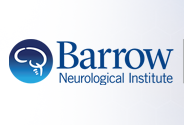Predictors of patient satisfaction in the surgical treatment of cervical spondylotic myelopathy
Document Type
Article
Abstract
OBJECTIVE: Patients with cervical spondylotic myelopathy (CSM) experience progressive neurological impairment. Surgical intervention is often pursued to halt neurological symptom progression and allow for recovery of function. In this paper, the authors explore predictors of patient satisfaction following surgical intervention for CSM. METHODS: This is a retrospective review of prospectively collected data from the multicenter Quality Outcomes Database. Patients who underwent surgical intervention for CSM with a minimum follow-up of 2 years were included. Patient-reported satisfaction was defined as a North American Spine Society (NASS) satisfaction score of 1 or 2. Patient demographics, surgical parameters, and outcomes were assessed as related to patient satisfaction. Patient quality of life scores were measured at baseline and 24-month time points. Univariate regression analyses were performed using the chi-square test or Student t-test to assess patient satisfaction measures. Multivariate logistic regression analysis was conducted to assess for factors predictive of postoperative satisfaction at 24 months. RESULTS: A total of 1140 patients at 14 institutions with CSM who underwent surgical intervention were included, and 944 completed a patient satisfaction survey at 24 months postoperatively. The baseline modified Japanese Orthopaedic Association (mJOA) score was 12.0 ± 2.8. A total of 793 (84.0%) patients reported satisfaction (NASS score 1 or 2) after 2 years. Male and female patients reported similar satisfaction rates (female sex: 47.0% not satisfied vs 48.5% satisfied, p = 0.73). Black race was associated with less satisfaction (26.5% not satisfied vs 13.2% satisfied, p < 0.01). Baseline psychiatric comorbidities, obesity, and length of stay did not correlate with 24-month satisfaction. Crossing the cervicothoracic junction did not affect satisfactory scores (p = 0.19), and minimally invasive approaches were not associated with increased patient satisfaction (p = 0.14). Lower baseline numeric rating scale neck pain scores (5.03 vs 5.61, p = 0.04) and higher baseline mJOA scores (12.28 vs 11.66, p = 0.01) were associated with higher satisfaction rates. CONCLUSIONS: Surgical treatment of CSM results in a high rate of patient satisfaction (84.0%) at the 2-year follow-up. Patients with milder myelopathy report higher satisfaction rates, suggesting that intervention earlier in the disease process may result in greater long-term satisfaction.
Medical Subject Headings
Humans; Male; Patient Satisfaction; Female; Middle Aged; Spondylosis (surgery); Retrospective Studies; Cervical Vertebrae (surgery); Aged; Spinal Cord Diseases (surgery); Treatment Outcome; Quality of Life; Decompression, Surgical; Follow-Up Studies
Publication Date
11-1-2024
Publication Title
Journal of neurosurgery. Spine
E-ISSN
1547-5646
Volume
41
Issue
5
First Page
611
Last Page
618
PubMed ID
39151188
Digital Object Identifier (DOI)
10.3171/2024.5.SPINE24326
Recommended Citation
Schupper, Alexander J.; DiDomenico, Joseph; Farber, S Harrison; Johnson, Sarah E.; Bisson, Erica F.; Bydon, Mohamad; Asher, Anthony L.; Coric, Domagoj; Potts, Eric A.; Foley, Kevin T.; Wang, Michael Y.; Fu, Kai-Ming; Virk, Michael S.; Shaffrey, Christopher I.; Gottfried, Oren N.; Park, Christine; Knightly, John J.; Meyer, Scott; Park, Paul; Upadhyaya, Cheerag; Shaffrey, Mark E.; Chan, Andrew K.; Tumialán, Luis M.; Chou, Dean; Haid, Regis W.; Mummaneni, Praveen V.; Uribe, Juan S.; and Turner, Jay D., "Predictors of patient satisfaction in the surgical treatment of cervical spondylotic myelopathy" (2024). Neurosurgery. 2178.
https://scholar.barrowneuro.org/neurosurgery/2178


